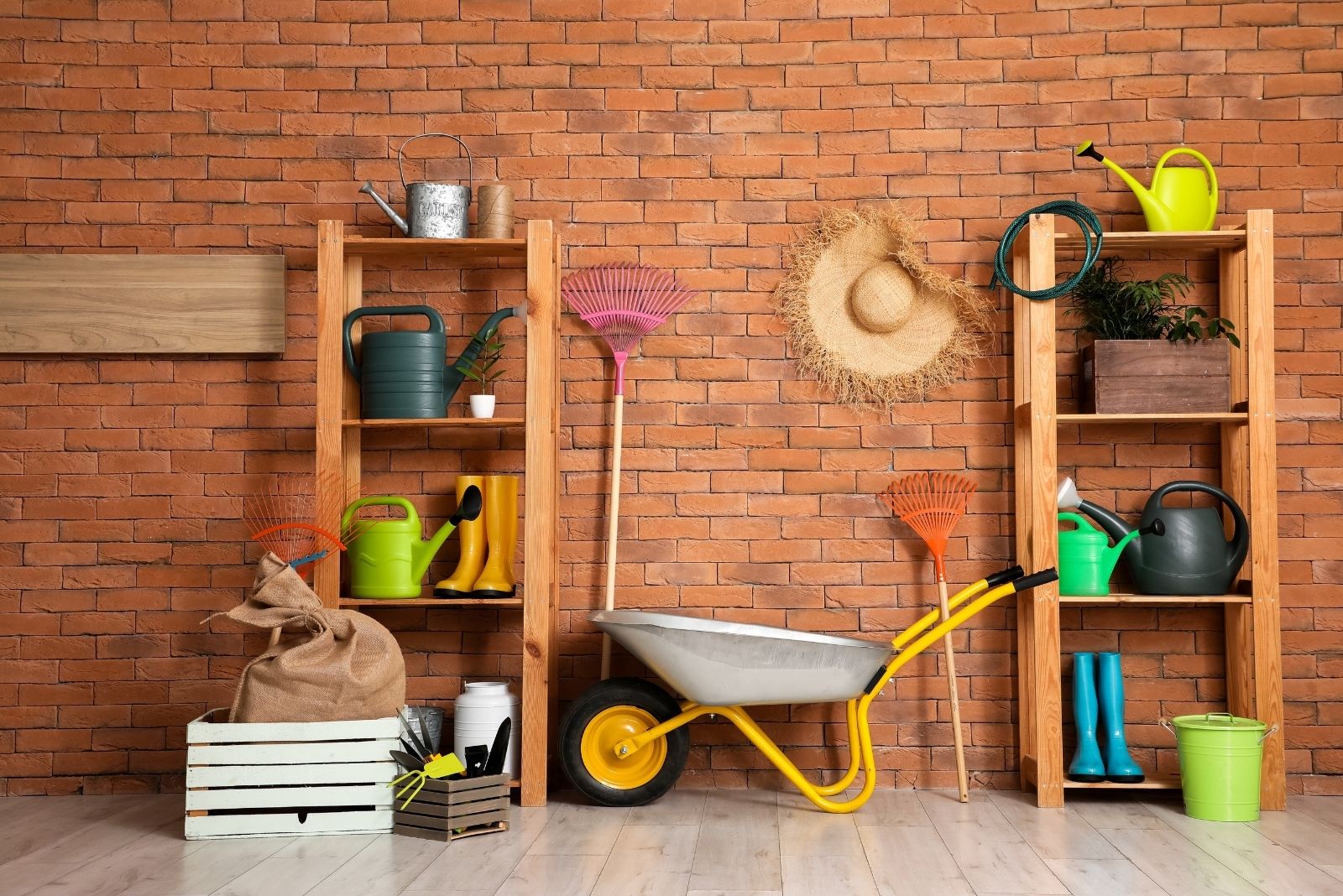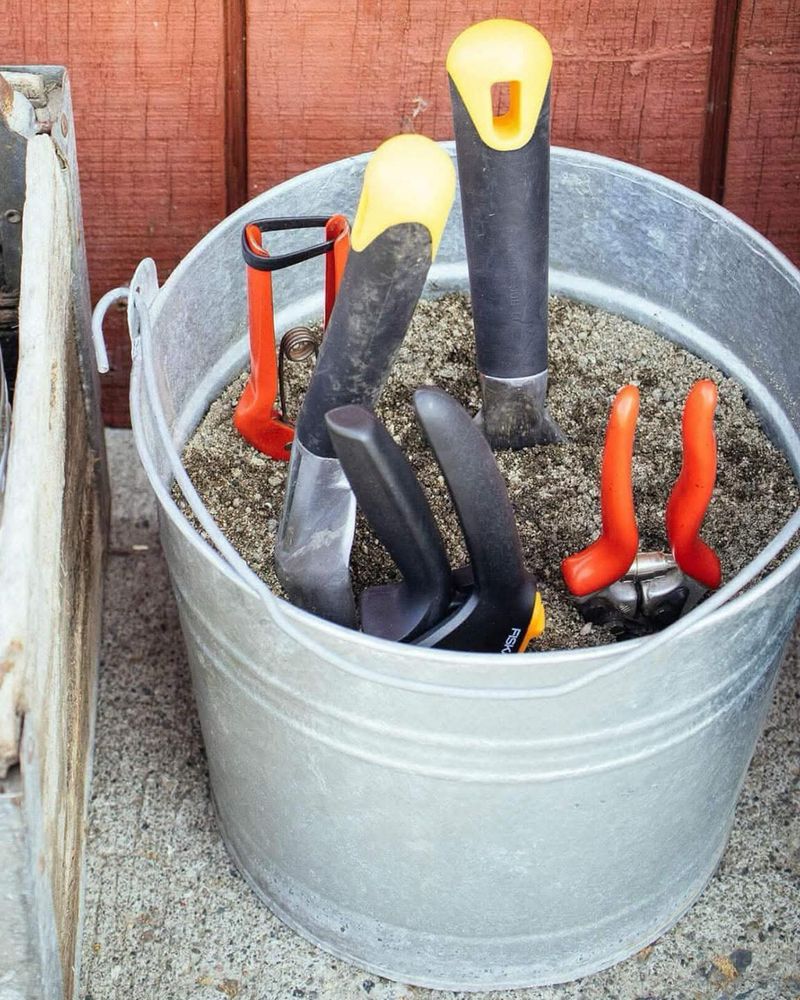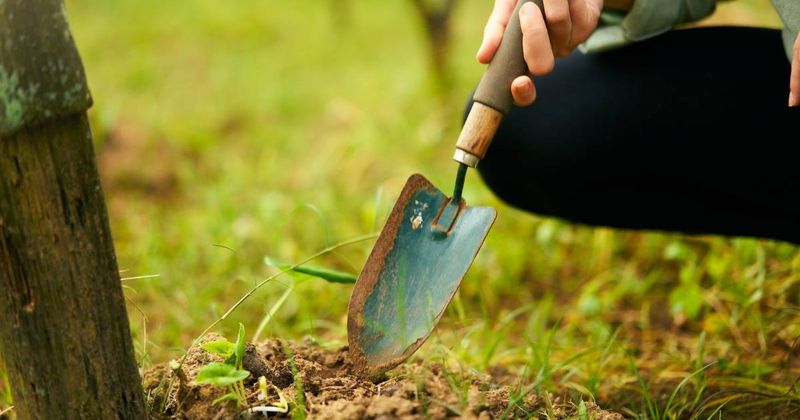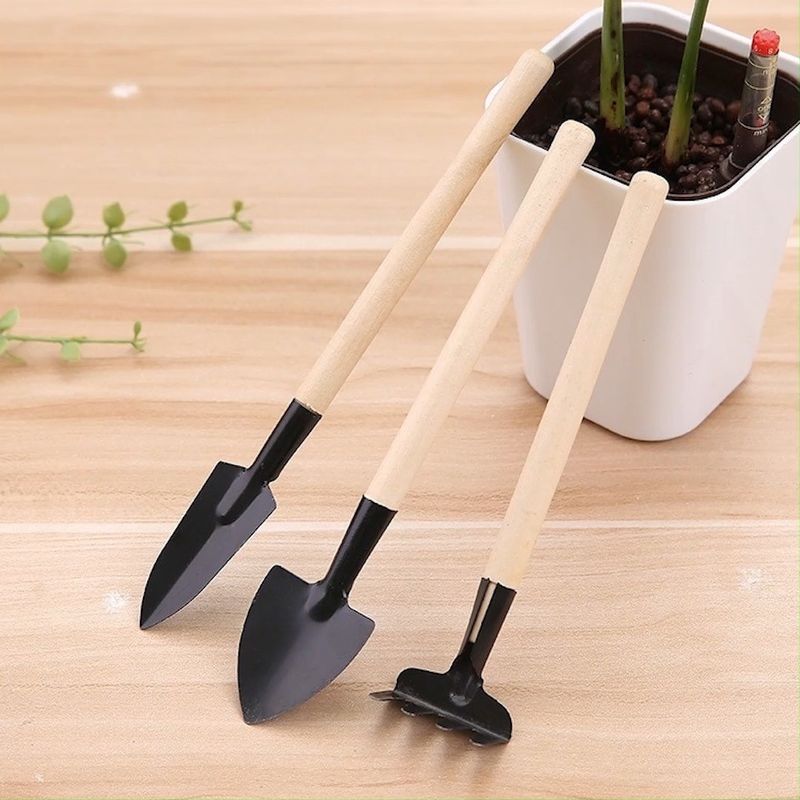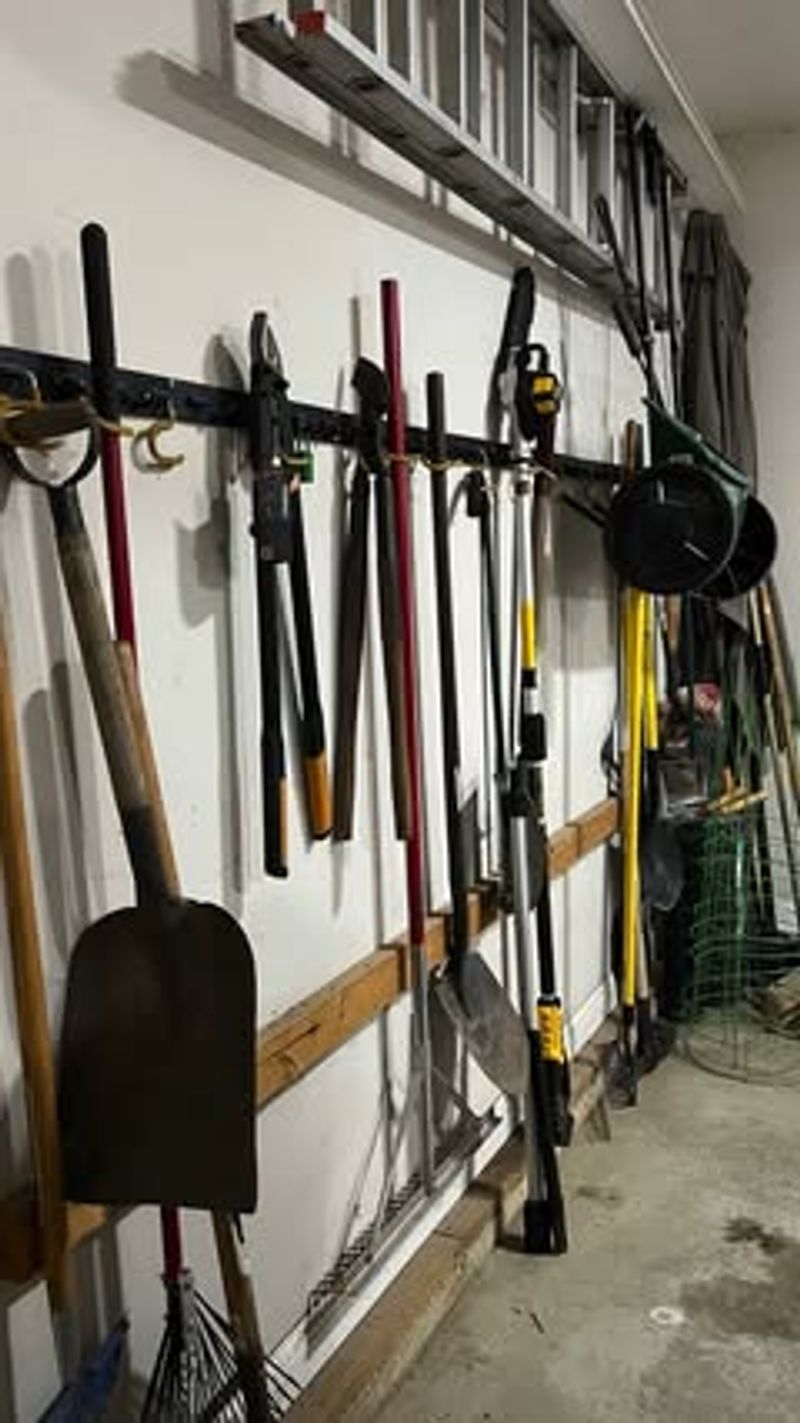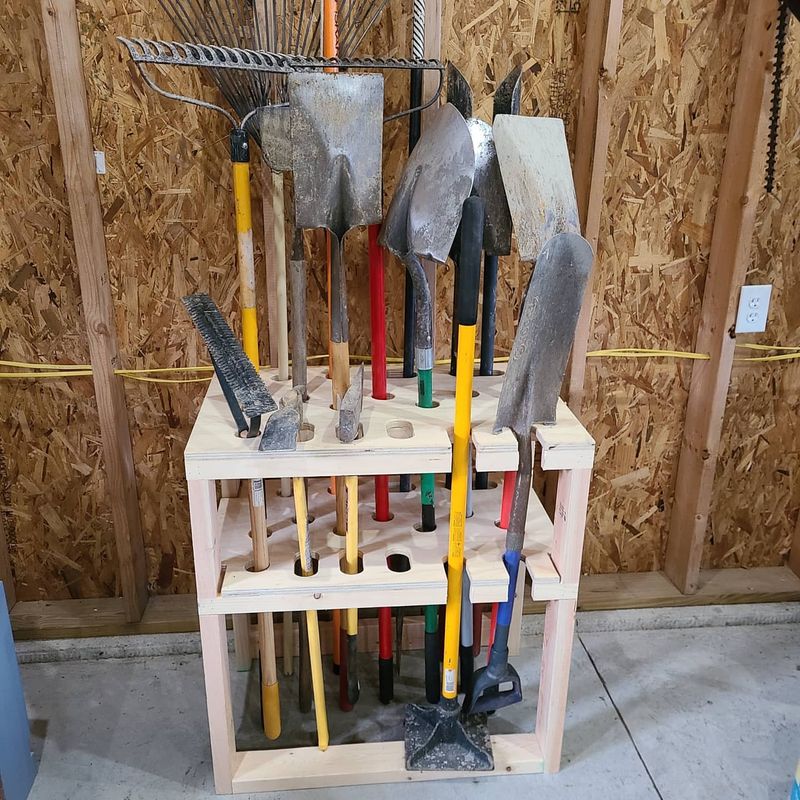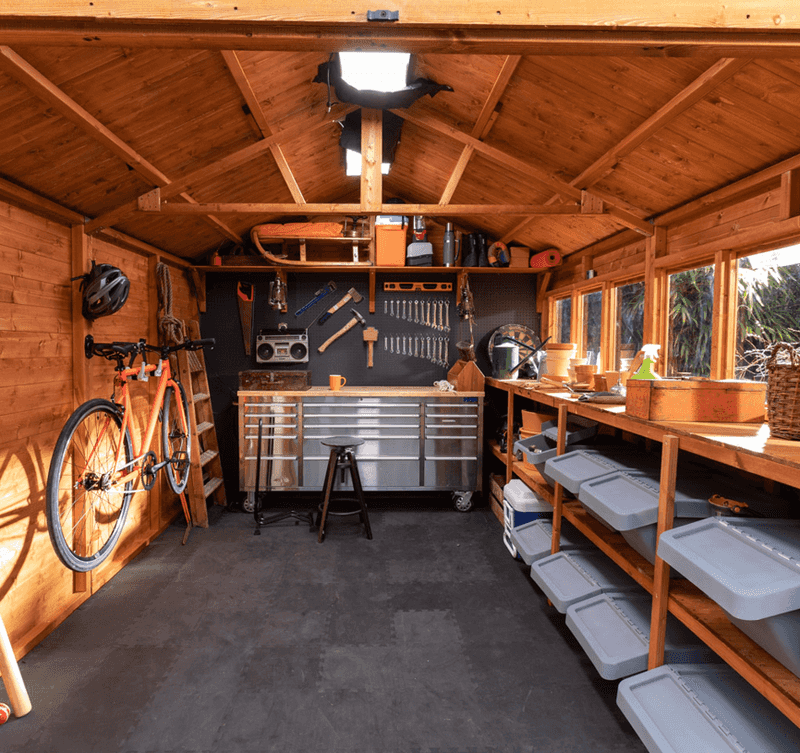Wisconsin winters bring bone-chilling temperatures that can wreak havoc on garden tools left unprotected. Proper storage not only extends the life of your equipment but saves you money and headaches when spring arrives. Taking a few simple steps now means you won’t be replacing rusted tools come planting season.
I’ve learned through many harsh winters that metal tools develop rust quickly when exposed to our damp Wisconsin freeze-thaw cycles. Wooden handles can crack, hinges seize up, and cutting edges dull faster when left to battle the elements unprotected.
My neighbor lost an entire collection of quality pruners and trowels after leaving them in an unheated shed last January. With temperatures regularly dropping below zero, proper winter storage isn’t just helpful—it’s essential for any serious Wisconsin gardener.
1. Clean Everything Thoroughly First
Garden soil contains moisture and acids that accelerate rust formation during winter storage. I use a wire brush to remove caked-on dirt from metal parts, then wash everything with warm soapy water.
For stubborn rust spots, a mixture of vinegar and water works wonders without damaging the metal. Let tools soak for 30 minutes, then scrub.
Wisconsin’s damp fall weather means tools need extra drying time before storage. I leave mine in the sun for a day or spread them near a heater to ensure they’re completely moisture-free before putting them away.
2. Oil Metal Parts To Prevent Rust
Wisconsin’s freeze-thaw cycles create the perfect conditions for rust to form on metal garden tools. After cleaning, I apply a thin coat of linseed oil or mineral oil to all metal surfaces using an old rag.
Pay special attention to pivot points on pruners and loppers where moisture can hide. A drop of oil here prevents spring frustration when tools won’t open properly.
For power tools, remove the battery and store it indoors where temperatures remain above freezing. The extreme cold of a Wisconsin garage can permanently damage batteries.
3. Condition Wooden Handles
Wooden handles crack easily during our harsh Wisconsin winters as they expand and contract with temperature changes. I sand any rough spots with fine-grit sandpaper, then apply boiled linseed oil to replenish moisture.
The oil penetrates deep into the wood grain, providing protection against humidity fluctuations. Apply two coats, waiting 24 hours between applications for proper absorption.
My grandfather taught me to hang wooden-handled tools rather than leaning them against walls. This prevents warping and keeps them from absorbing ground moisture that seeps into even the best-insulated Wisconsin garden sheds.
4. Create A Smart Storage System
Vertical storage maximizes space and prevents damage in tight Wisconsin garden sheds. I installed a pegboard wall with hooks for hanging long-handled tools like rakes and shovels.
Small tools like trowels and pruners stay organized in repurposed plastic containers with moisture-absorbing silica packets. These packets are gold during our humid spring thaws when condensation forms quickly on cold metal.
Last winter, I started using PVC pipe mounted horizontally as slots for hand tools. This keeps everything visible and prevents the dreaded tool avalanche that happened when I opened my shed after January’s blizzard.
5. Choose The Right Storage Location
Wisconsin’s extreme temperature swings demand thoughtful storage location choices. An unheated garage works for most tools, but anything with rubber parts or precision mechanisms deserves better protection.
I learned the hard way after leaving my sprayer in the garage last winter. The rubber seals cracked in the -20°F temperatures, making it useless come spring.
For basement storage, watch humidity levels. Our spring thaws can create damp conditions that undo all your winter preservation work. A dehumidifier or moisture-absorbing products near your tool storage area provides extra protection against Wisconsin’s seasonal moisture challenges.
6. Create A Humidity-Controlled Hanging System
Wisconsin’s freeze-thaw cycles create the perfect environment for tool-destroying moisture. A wall-mounted pegboard system keeps implements off the ground where dampness collects. Organize tools by frequency of use, with spring essentials furthest from reach.
Add a small dehumidifier nearby during particularly wet periods. The investment pays off by preventing rust formation deep within tool mechanisms where you can’t easily oil. Many Wisconsin gardeners add silica gel packets between stored tools as an extra moisture-fighting measure.
For ultimate protection, install this system in an insulated garage rather than an unheated shed. The more stable temperature prevents condensation that forms when metal tools warm and cool repeatedly throughout winter’s temperature swings.

